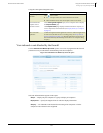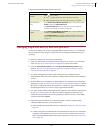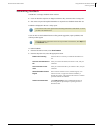
128
Enforced Client Product Guide Using the Browser Protection Service
Accessing site safety information
6
How safety ratings are compiled
Safety ratings are derived by testing criteria for each website and evaluating the results to assess
whether the site poses a risk and, if so, what type of risk.
Automated tests compile safety ratings for a website by checking for:
Viruses and potentially unwanted programs bundled with downloaded files.
Spam or a high volume of non-spam emails sent after submitting contact information in a
signup form.
Excessive popup windows.
Attempts by the site to exploit browser vulnerabilities.
Deceptive or fraudulent practices employed by a site.
Test results are compiled into a safety report that can also include:
Feedback submitted by site owners, which might include descriptions of safety precautions
used by the site or responses to user feedback about the site.
Feedback submitted by site users, which might include reports of phishing scams or bad
shopping experiences.
Analysis by SonicWALL employees.
Staying safe during searches
When users enter keywords into a popular search engine such as Google, Yahoo!, MSN, Ask, or
AOL.com, color-coded safety icons appear next to sites listed in the Search Results page:
No significant problems.
Some issues users should know about. For example, the site tried to
change the testers’ browser defaults or sent them a high volume of
non-spam email.
Some serious issues that users should consider carefully before accessing
the site. For example, the site sent testers spam emails or bundled adware
with a download.
To view a site’s safety balloon:
Hold the cursor over the safety icon.
To view a site’s safety report:
Click the safety icon or select More info in the safety balloon.


















